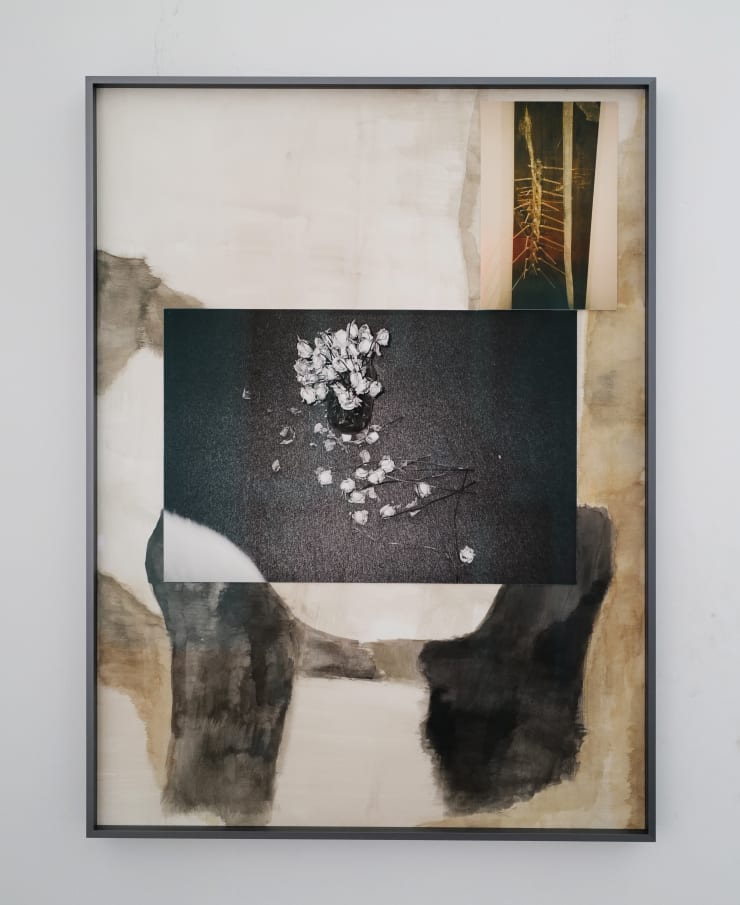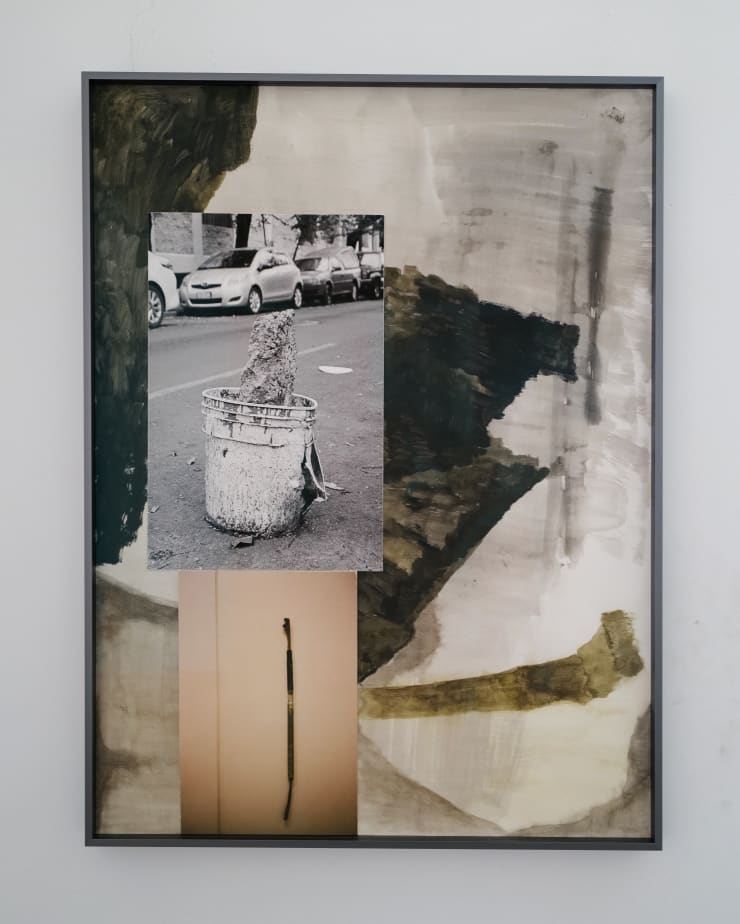-
Experimenter presents a group exhibition with works by Adip Dutta, Ayesha Sultana, Bhasha Chakrabarti, Biraaj Dodiya, Christopher Kulendran Thomas, Julien Segard, Krishna Reddy, Praneet Soi, Rathin Barman, T. Vinoja, and Vikrant Bhise.
-
Christopher Kulendran Thomas’ paintings metabolise the colonial art history that came to dominate in Sri Lanka after the artists’ family, who are Tamil, left escalating ethnic violence there. The paintings have been exhibited in the artist’s recent solo exhibitions at FACT, Liverpool (2025); WIELS, Brussels (2024); Kunsthalle Zürich (2023); KW Institute for Contemporary Art, Berlin (2022); and Institute of Contemporary Arts, London (2022).
-
Krishna Reddy (1925 – 2018) consistently experimented with form, technique and application. At Stanley William Hayter’s Atelier 17, he developed and invented the process that he is most well-known for – simultaneous multicolour viscosity printing – and broke new ground in intaglio printmaking. In collaboration with Hayter, Reddy developed a new technique in multi-colour printing by utilising variable viscosities of the printing inks. He was able to control the viscosity of the inks by altering the oil consistency in each impression, thereby allowing the inks to occupy different depths without mixing with each other, a process never done before. Using a range of rollers, he pushed the inks to desired parts of the plate, making spectacular unique mono-prints, rich in their textural quality and dimensionality. Reddy constantly pushed the boundaries that were not only confined to the formal process of printmaking but a revolutionary way of thinking on how to develop a new form.
-
Ayesha Sultana’s graphite drawings signify a delicate yet intriguing dissonance between appearance and reality, revelation and ambiguity—through configurations and arrangements of geometric shapes and spatial structures, in a frame-by-frame progression of image and time. On closer viewing, the smooth surface of the paper is dark but reflective, nestled within it lies an intricate mesh of frictions and ruptures which animate the tactile surface resembling the texture of metal; thus underscoring the mineral attributes of graphite. This also refers to an element of three-dimensionality produced by the dialogue between the versatile malleability of paper and the austere physicality of graphite.
-
Praneet Soi’s presents work created from his ongoing immersion with craftsmen in Kashmir. The craft of painting on wood cuts and papier-mache, introduced to Srinagar by Sufi preachers traveling to Kashmir from Central Asia in medieval times, captivated Soi to work with the master craftsman Fayaz Jan in the traditional Karkhana, or studio to produce wood cuts or hand-made papier-mache tiles and painting upon them traditional Kashmiri motifs. Ever since his first immersion with the craftsmen in 2014, Soi has been returning to Srinagar to intertwine himself within the Karkhana’s working rhythm, making decisions with the craftsmen pertaining to the motifs, such as their color and composition, that are historically recognizable within the region’s craft industry, but which push away from their original decorative trajectory into what might be described as experimental compositions. Soi often-times introduces his own imagery into the conversation, opening up interesting possibilities to explore with craftsmen. These are hybrid constructions, containing within them not only conversations between Soi and the craftsmen but also the histories of patterns as they migrated across geography and culture in times gone by.
-

-
In his new series of works, Vikrant Bhise (lives and works in Mumbai, India) has portrayed Chembur’s Siddharth Colony, an important and active Dalit neighbourhood in the city. Rendered entirely in shades of blue—a symbol of resistance, dignity, and the collective strength of the Dalit community—the works evoke a history of struggle and a vision for justice. Places like Worli BDD Chawl, Matunga Labour Camp, Ramabai Nagar Ghatkopar, Kannamwar Nagar Vikhroli, and Siddharth Colony are more than just residential spaces in Mumbai—they are places where Ambedkarite philosophy has lived, been practiced, and celebrated through public readings, street plays, musical performances, study circles, and political organising. Each colony holds a distinct legacy. Now that many of these colonies are redeveloped, Bhise questions where future generations will gather to organise, perform, or express their activism, but emphasises that the spirit of the Dalit Movement will endure through memory, voice, and resistance.
-
Rathin Barman’s, Arbitrary Spaces, are a new body of cast concrete relief sculptures with brass projections highlight altered, contemporary arches and pillars. These forms are drawn from the architectural elements and renderings of grand colonial homes in North Kolkata, which Barman has engaged with for many years. This body of work also stands as a metaphor for the makeshift tenements and adaptive architectural interventions introduced to accommodate expanding families or migrant tenants—individuals who have, over generations, made these homes their own. Barman explores the notion of ‘home’ as a living organism, using a precise conjunction of disembodied built forms and the simultaneous renewal of future possibilities. In contrast to the perceived permanence of architectural structures, his work underscores how the configuration of spaces and architectural features morph over time, reflecting the shifting contexts and lives of their inhabitants. In Barman’s practice, architecture becomes an anthropological tool—the representation of space emerges not only from spontaneous, sensorial responses but also from deeply personal connections forged with the residents of these evolving homes
-

-
Over several years Adip Dutta (b. 1970, Kolkata) has immersed himself in the nightscape of the city, relooking at the sculpturality of form left behind in empty spaces of bustling footpaths, wares sold on streets tightly packed with tarpaulin and discarded items of daily use.
-
For any further information or inquiries email admin@experimenter.in
Experimenter at Art Basel 2025
Current viewing_room








































